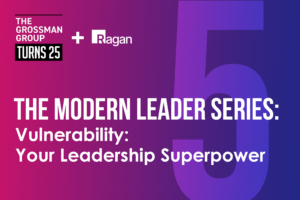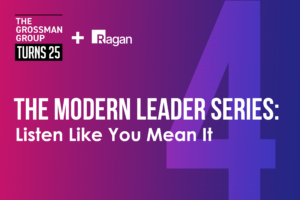Tech and measurement tactics for reaching deskless workers
Tips and tools to ensure your messaging reaches all employees.

In our ever-connected, technologically advanced world, it’s easy to streamline comms across multiple channels. Maybe you’re thinking about how to reach a group of managers with a blog post, or new hires with a video.
Depending on your industry, you may have never struggled to reach workers in essential services, retail, production, manufacturing and industrial roles.. But what about those countless other employees, including many on the front lines of organizations, that are deskless? Reaching them matters a great deal too, as they’re often the key drivers of risk and reputation (just ask Boeing).
Deskless workers, who are usually not in an office, make up a majority of the global workforce, according to U.S. Bureau of Labor Statistics data, but remain the least trusting and satisfied employees, according to Edelman’s annual trust barometer.
A holistic look at your comms efforts can help you reach your entire organization, regardless of where they work from. With a little bit of audience segmentation and care in your approach, you can find engagement with employees who aren’t constantly tethered to their devices.
Consider where tech and workflows intersect
While intranets, digital signage and other tech can enable you to reach deskless employees, it’s worth evaluating their effectiveness through the lens of employee behaviors.
Christine de la Huerta, director of internal communications at Baptist Health South Florida, said that just like in any other marketing and comms task, it’s all about knowing your audience well. But for deskless workers, there’s an added element of consideration of the physical surroundings they’re in and how messaging figures into that.
“I embrace technology, but before you can even go there, you need to consider what people’s workflows look like,” de la Huerta said. “Where do they go and what do they spend time on?”
You need to be keenly attuned to the physical movement patterns and habits of deskless workers, just as you would the online habits of those at desks. This information can help inform the way messaging rolls out to deskless communities. The rollout of the message should depend on the purpose of the communication.
“What you try to do will depend on the arc of your storyline,” de la Huerta said. “Think about where your employees park, the elevators they take, the doors they walk through — these are all inflection points for signage that can get messages across.”
Don’t underestimate the value of placing physical QR codes in on-site work locations to bring people back to much-needed comms information.
“We’ve done everything from screen savers to tent cards to stickers —in today’s world, there’s (always) a technology angle there too,” de la Huerta said.
Measuring comms impact with deskless workers
On the surface, it might seem tough to measure the impact of things like posters by the elevators and tent cards on folding tables have on your deskless workers. But once you dig down a little, the tech can help.
“You can measure things like how many scans a QR code gets,” explained de la Huerta, “and those QR codes with information can also lead to pathways for much-needed feedback, like pulse surveys.”
She emphasized that soliciting in-person feedback from deskless workers is just as valuable a measurement metric as something that goes in a spreadsheet.
“Make your big decisions based on data as much as you can, and if you can get feedback data from big meetings, town halls or other gatherings, you should try to do that.”
Bringing corporate comms to the frontline
Just as people at their desks want to hear from their organizational leaders, deskless workers benefit from that same leadership touchpoint as well. It’s up to communicators to create that connection.
In a past role, de la Huerta’s department helped company news reach deskless workers by giving them printouts with a daily update sheet that provided company news and espoused organizational values. This helped foster community and connection even away from any internet source.
“It’s providing them a vehicle for engagement while also providing them a sense of ownership in company culture,” she said.
Employees at all phases of the deskless employee journey, especially new ones, can benefit from these connection points. The more, the better.
“If you can serve up content that’s targeted to employee personas, that’s a massive one,” added de la Huerta. “A one-track approach simply isn’t going to hit everybody.”
Sean Devlin is an editor at Ragan Communications. In his spare time he enjoys Philly sports and hosting trivia.







